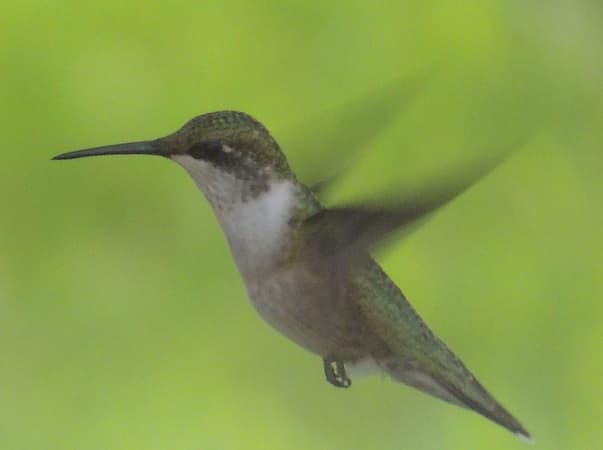How to Grow Hummingbird Flower Plants

About Growing Hummingbird Plants in Your Home Flower Garden
Gardeners just love to grow attractive Hummingbird flowers. This ornamental is a magnet for both hummingbirds and honeybees with its bright, tubular blooms. And, it is so easy to grow. Some gardeners say the best way to grow the perennial Hummingbird bush, is to ignore them! Growing perennial hummingbird plants in a flowerpot on your patio or deck is very rewarding You can watch the Hummingbirds hovering just a few feet away as you watch them from a lounge chair.
Native to Uruguay in South America where it gets its name, the Hummingbird plant is bushy, growing about 2 feet tall and three feet wide. It is a perennial plant, that is grown as an annual in cooler regions of the country. It has velvety, grayish-green and hairy leaves. The plant produces masses of tubular, bright blooms from late spring up to the first killing frost. The hummingbirds feed upon the rich nectar in the flowers. In turn, as the hummingbirds move from flower to flower, they aid in the pollination process. The flowers produce tiny fruit which contain the seeds for future generations of this small bush.
Try growing the Hummingbird Plant in containers, baskets, beds, and borders.
Hummingbird Plants are deer resistant.
Hummingbird Plant Specifications
Flower Colors: Orange, coral, or reddish-orange.
Flowers Bloom: Mid-Summer through late Fall.
Plant Height: Grows up to two feet tall and three feet wide.
Light Requirements: Full sun to partial afternoon shade.
Ideal Soil pH: 6.0 – 8.0.
Toxic?: Non-toxic to humans and pets.
Deer Resistant?: Yes
Hardiness Zones: 7 – 10
Plant Type: Perennial
Native To: South America
Botanical Name: Dicliptera suberecta
Other Names: Uruguayan Firecracker Plant, Firecracker Flower, Hummingbird Bush Plant
Medicinal Uses for Hummingbird Plants
We have not found any medicinal applications for the Hummingbird Plant.
Hummingbird Plant Light Requirements
Selecting the right planting locations is vital for this bush. People who love hummingbirds know it is important to select a planting site where they can watch the birds flock to the bright, tubular flowers and feed on the sweet nectar. With a little luck, you will see two or three Hummingbirds there at the same time.
Also, select a location where the plant will receive full sun. In hotter regions, the plant benefits from partial afternoon shade.
Perennial Hummingbird Plant Propagation
The plants are propagated by the division of the root ball of established plants. Or, take cuttings from established plants and root them. More on propagation from cuttings and rooting
You can also grow Hummingbird plants from seed. However, it takes much longer to germinate and grow new plants. Because of the long germination period, if sown outside, make sure to mark the planting site.
Days to First Germination: 10 to 28 days after planting seeds.
How to Grow Hummingbird Flowers
Growing Hummingbird plants is easy to grow. The plants grow best in full sun. They thrive in hot conditions. And they are humidity and drought tolerant.
Grow the plants in average to below-average soils. They do not require fertilizers. But, a dose of general-purpose fertilizer in poor soils twice a year helps to maximize plant growth.
The plants do well in dry to slightly dry soils. We recommend you water them only during periods of drought. Avoid wet soil for any length of time, as the roots can rot in soggy soil.
Apply a thick layer of mulch around plants, to keep weeds down.
Plants will go dormant for the winter. At the end of the season, cut plants to the ground.
How to Prune a Hummingbird Bush
First, remove any dead of sickly leaves and stems. Usually, there are very few as this is a normally healthy, disease-resistant plant.
When grown in lower light, the plant can become leggy. Trim it back a little.
If you are not looking to capture the seeds, deadhead spent blooms. Deadhead spent blooms to promote new flowers.
Insects and Plant Disease
Hummingbird plants are seldom bothered by insects and plant diseases. If insect or disease problems occur, treat the plant early with organic or chemical insect repellents and fungicides.
The plant is not on the diet of deer.
The roots rot in soggy soils.
Also see: Plant Problems – Identify the causes and find the cures.
Overwintering Hummingbird Plants
In colder, northerly areas of the country gardeners grow this bush as an annual. However, in warmer areas, the perennial hummingbird plant overwinters well.
After a frost or freeze kills the plant for the season, cut it back to the ground. Then, add a layer of mulch. Now your Hummingbird bush is tucked away for the winter. It will awaken in the spring with vigorous new growth.
Related Articles
Also, people who read this article will like:
Please support our site. Shop for:
- rmmatthews100@hotmail.com
- 585-721-6528
- Rochester, NY
©1999-2024 GardenersNet.Com, All Rights Reserved

